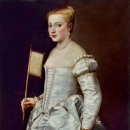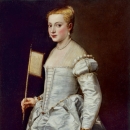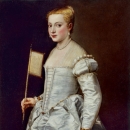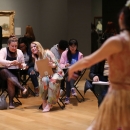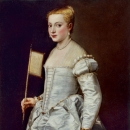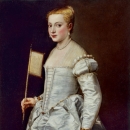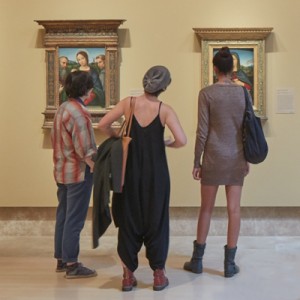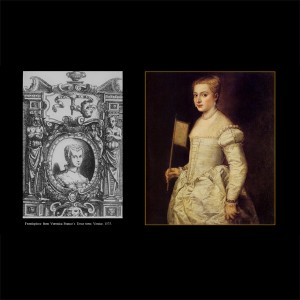Titian’s 'Portrait of a Lady in White,' c. 1561, on loan from the Gemäldegalerie Alte Meister, Staatliche Kunstsammlungen Dresden
A beguiling young woman, in white satin gown, bejeweled with gold, precious stones and pearls, stops fanning herself with a ventuolo for a moment to catch our gaze. She is spotlighted, and the intensity of the illumination is reflected in her hair, the sheen of the fabric of her dress and the fervent flush of her cheeks and lips. Her warm brown eyes offset her opalescent skin and gown and echo the dark terracotta of the mottled background. Her image could almost be seen as a monochromatic impression, save for the punctuation of her evocative red lips, with that demure smile.
Interpretations of this inscrutable picture, generously on loan from the Gemäldegalerie Alte Meister, Staatliche Kunstsammlungen Dresden, were voiced as early as 100 years after Titian (Tiziano Vecellio, c. 1488–1576) executed it, and uncertainty about the sitter’s identity remains. Is this a portrait of Titian’s daughter Lavinia, his illegitimate daughter Emilia, or might she be the artist’s mistress? Should it not be considered a traditional portrait, but rather an idealized image depicting the very essence of the beauty and spirit of Venetian women?
Archival documents give us some clues, but no answers. In 1561, Titian himself referred to this painting in a letter to Alfonso II d’Este of Ferrara (1533–1597), saying that the image represented someone very dear to him, “the most precious being” in his life. In an earlier letter to Philip II of Spain, an avid collector of Titian’s work, the artist referred to another version of the painting (now lost), calling the sitter “the absolute mistress of my soul.” Based on these words, the painting was catalogued as early as 1663 in the Este collection as “Titian’s mistress.” Over the centuries, art historians and biographers have speculated on the subject’s identity, but to this day we cannot be certain who this mysterious beauty might be. SHOW MORE


